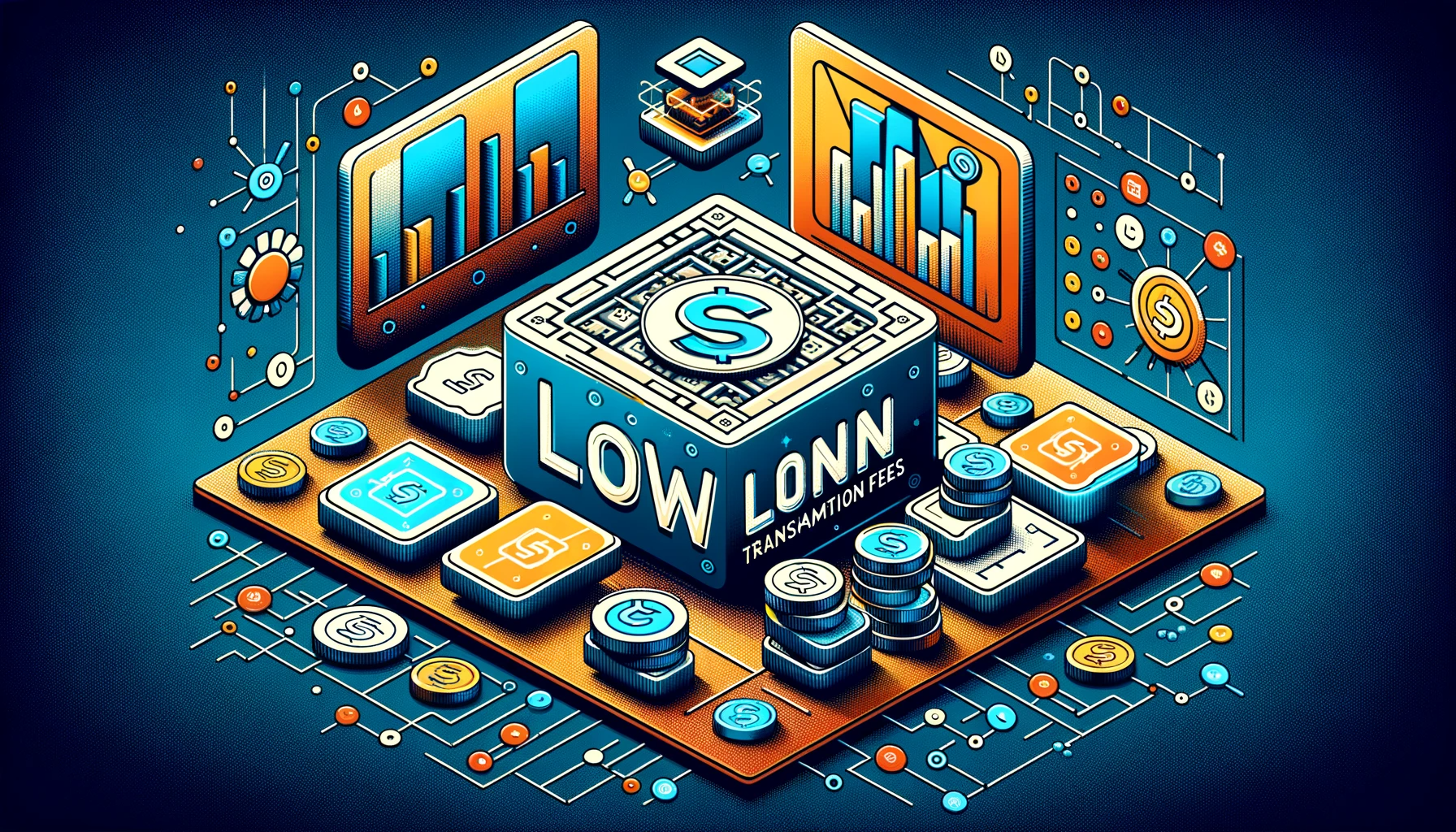The ambitious Solana project aims to solve the blockchain trilemma, yet it still suffers from various shortcomings, such as vulnerability to centralization.
Contents:
- What Makes Solana Unique?
- How Does the Blockchain Work?
- The SOL Token
- Solana vs. Ethereum
- Advantages of Solana
- Disadvantages of Solana
- Investors
- Where to Buy and Stake Solana Cryptocurrency
- Solana's Roadmap

Solana is a public blockchain with open source that supports smart contracts, including non-fungible tokens (NFTs) and various decentralized applications (dApps). The project supports multiple decentralized finance (DeFi) platforms. At the heart of the blockchain is the SOL token, which ensures network security through staking, and also serves as a means of transferring value.
Founded in 2017 by Anatoly Yakovenko, a former Qualcomm executive, Solana aims to scale throughput beyond what is typically achieved with popular blockchains, while maintaining low costs. It implements an innovative hybrid consensus model that combines a unique Proof of History (PoH) algorithm with a lightning-fast synchronization mechanism, which is a version of Proof of Stake (PoS). Because of this, the Solana network can theoretically process over 710,000 transactions per second (TPS) without any scaling solutions.
This blockchain was deployed during the 2017 Initial Coin Offering (ICO) boom. The project's internal test network was released in 2018, followed by several stages of testnet, which ultimately led to the official launch of the mainnet in 2020.
What Makes Solana Unique?
The Solana algorithm aims to solve the blockchain trilemma. This trilemma describes a set of three main problems faced by developers when creating blockchains:
- decentralization;
- security;
- scalability.
It is widely believed that blockchains are built in such a way that they force developers to sacrifice one of the aspects in favor of the other two, as they can only provide two out of three advantages at any given time.
The Solana blockchain platform proposed a hybrid consensus mechanism that compromises decentralization for maximum speed. The innovative combination of PoS and PoH makes it a unique project in the blockchain industry.
Generally, blockchains have greater scalability, depending on the number of transactions per second they can support, the more and better they scale. However, in decentralized blockchains, time discrepancies and higher throughput slow them down, meaning that more nodes checking transactions and timestamps take more time.
In short, Solana solves this problem by selecting a single leading node based on the PoS mechanism, which orders messages between nodes.
Moreover, the blockchain platform creates a chain of transactions by hashing the output of one transaction and using it as input for the next transaction. This history of transactions gives the name to Solana's main consensus mechanism: PoH, a concept that provides greater scalability of the protocol, which, in turn, enhances usability.

How does the blockchain work?
The main component of the Solana protocol is the proof of history, a sequence of computations that provides a digital record, confirming that an event occurred on the network at any point in time. It can be represented as cryptographic clocks that timestamp each transaction on the network. And also a data structure that can be a simple addition to it.
PoH is based on PoS using the Byzantine Fault Tolerance Tower (BFT) algorithm, an optimized version of the practical Byzantine Fault Tolerance protocol (pBFT). Solana uses it to achieve consensus. Tower BFT ensures the security and operability of the network and acts as an additional tool for verifying transactions.
Moreover, PoH can be viewed as a high-frequency verifiable delay function (VDF), a triple function (setup, evaluation, verification) to produce a unique and reliable output. VDF maintains order in the network, proving that block producers have waited long enough for the network to move forward.
Solana uses a 256-bit secure hash algorithm (SHA-256), a set of proprietary cryptographic functions that output a 256-bit value. The network periodically samples a number and hashes SHA-256, providing real-time data in accordance with the set of hashes included in central processors.
Solana validators can use this sequence of hashes to record a certain piece of data that was created before the creation of a specific hash index. A timestamp for transactions is created after inserting this particular piece of data. To achieve the stated huge number of TPS and block creation time, all nodes in the network must have cryptographic clocks to track events, rather than waiting for other validators to confirm transactions.
SOL Token
The cryptocurrency of Solana — SOL. It is the native and utility token that provides a means of transferring value, as well as securing the blockchain through staking. SOL was launched in March 2020 and aimed to become one of the top 10 largest cryptocurrencies to enter the market by total market capitalization.
The SOL token operates in a manner similar to that used in the Ethereum blockchain. Although they function in the same way, SOL holders stake tokens to validate transactions using the PoS consensus mechanism. In addition, this token is used to earn rewards and pay transaction fees. SOL also allows users to participate in governance.
A total of over 500 million SOL coins will be issued. There are more than 340 million tokens in circulation. About 60% of all SOL tokens are controlled by the founders of Solana and the Solana Foundation.
SOL tokens can be purchased on most exchanges. The best cryptocurrency exchanges for trading are Binance, Coinbase, KuCoin, Huobi, FTX, and others.

Solana vs. Ethereum
When it comes to processing speed, Solana can challenge the dominant smart contract platform, as it is presumably capable of reaching speeds of over 50,000 TPS (Transactions Per Second). This blockchain uses different consensus algorithms to avoid slow transaction confirmations. This feature makes Solana one of the fastest blockchains.
In comparison to this huge number, the current low-scalability Proof of Work (PoW) model of Ethereum can only process 15 TPS. Thus, Solana is thousands of times faster than Ethereum. Another advantage of Solana is the extreme cost efficiency of the network, as the project implements a new tokenomics for lower transaction fees.
It's also worth noting that the Solana blockchain, implementing one of the variations of PoS (Proof of Stake), is more environmentally friendly and sustainable. This contrasts with Ethereum, whose current PoW model requires the use of immense computing power.
Nevertheless, everyone in the crypto community is eagerly awaiting Ethereum's update to PoS. The new Ethereum, which is being carefully developed, will consist of an execution layer (formerly known as Ethereum 1.0) and a consensus layer (formerly Ethereum 2.0). This could significantly increase throughput, improve scalability, reduce transaction fees, and halt unsustainable energy consumption.
Advantages of Solana
As the DeFi and non-fungible token (NFT) ecosystems have flourished recently, the Ethereum network has become overloaded and extremely expensive to use. The Solana network offers what Ethereum currently cannot – fast transactions at almost no cost.
For this reason, activity in this blockchain's chain has rapidly grown both in the creation of decentralized applications (dApps) and in transactions. While Ethereum still has over $125 billion locked in dApps, Solana is growing exponentially.
Since its inception in 2017, this network has become the sixth most used DeFi platform by locked value. Currently, nearly $8.6 billion is locked in various DeFi applications on this blockchain, most of which was accumulated only in 2021.
The Solana network allows for a theoretical throughput of 65,000 transactions per second, which is a significant leap compared to seven transactions in Bitcoin and 15 transactions per second in Ethereum (TPS). Combined with the high gas fees in the ETH blockchain, Solana offers a much lower barrier to entry, helping to quickly grow its user base.
Transactions on this blockchain are several times cheaper than others, averaging $0.00025.
Currently, Solana has 1,469 nodes in its ecosystem, with over 74% of circulating tokens staked in the network, generating rewards.

Disadvantages of Solana
If you're still wondering whether Solana is a good investment and whether you should buy it, the answer still depends on you. Despite its apparent advantages, this blockchain, like any existing crypto project, has its drawbacks.
Firstly, although the Solana blockchain can compete with top-class blockchain projects, it is still vulnerable to centralization due to the relatively small number of validators. Anyone in the network can become a Solana validator, but it remains challenging to do so due to the significant computational resources required.
Despite these issues, this blockchain remains one of the largest ecosystems in the crypto industry and appears to be on the right path of growth.
Investors
Investors in Solana include some of the most well-known venture firms in the crypto space:
- a16z;
- CoinShares;
- Alameda Research;
- Coinfund;
- Parafi Capital.

Where to Buy and Stake Solana Cryptocurrency
You can purchase SOL token at the following centralized exchanges:
- Coinbase;
- Kraken;
- FTX;
- Binance;
- Crypto.com;
- BitMax.
Decentralized exchanges:
- Raydium;
- Orca;
- Serum.
Staking allows holders to earn rewards for helping to secure the network. They delegate their tokens to validators who process transactions and manage the network, following a financial model with shared risk and rewards. The more stakes delegated to a validator, the more often that validator will be chosen to record new transactions in the ledger. And the more rewards they will earn.
SOL can be staked on some exchanges, as well as through personal wallets. While staking on an exchange is a great option for beginners, using a personal wallet and choosing a staking pool yourself helps to spread tokens across the network and further decentralize it. Using a hardware wallet, such as Ledger or Trezor, is the best solution for securing your private keys.
Wallets where you can stake Solana:
| № | Название кошелька |
|---|---|
| 1 | SolFlare |
| 2 | Sollet |
| 3 | Phantom Wallet |
| 4 | Math Wallet |
| 5 | Atomic Wallet |
| 6 | Exodus Wallet |
| 7 | Zelcore |
Main exchanges where you can stake Solana are: Binance, Kraken, FTX, Crypto.com.
Solana's Roadmap
This project has several exciting developments coming to the network or just announced.
Solana Pay will enable merchants to accept USD Coin and other tokens using Solana's speed and low cost. This new product emerged as a result of partnerships with Checkout.com, Citcon, as well as integrations with FTX and Phantom.
Coachella, one of the most famous music festivals in the world, which took place in the second quarter of 2022, also announced a collection of NFTs created using Solana. Some of the NFTs have real value, including lifetime subscriptions to the festivals, guest passes, VIP passes, and other special privileges that have not yet been announced.



